This CPD, sponsored by Franke Sissons, will consider how to conserve water in buildings and the ways specifiers can help to reduce water consumption
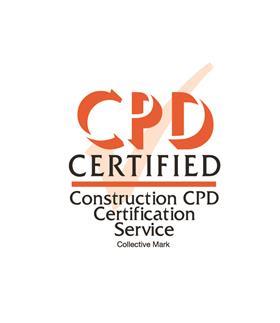
CPD CREDITS: 60 MINUTES
DEADLINE: 3 JANUARY 2020
For more information about Assemble Media Group’s CPD distance-learning programme, click here
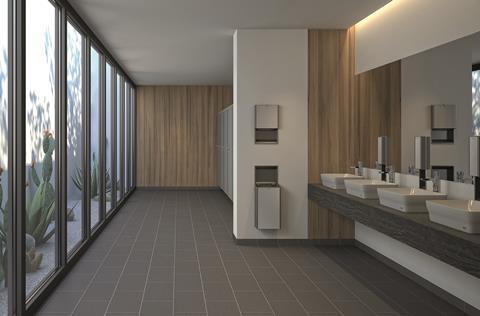

Introduction
The threat of climate change is exacerbating a shortage of freshwater across the globe. A total of 97% of the world’s water is seawater – salty – and consequently undrinkable. Glaciers contain 2%, leaving just 1% of available water as freshwater for a growing world population approaching 8 billion people. Countries are making strenuous efforts to address water shortages, and unquestionably the built environment can play its part.
This CPD will look at the issues surrounding water demand and supply, ways to conserve water in buildings and how specifiers can help reduce water consumption.
Water conservation
The world’s population of 7.7 billion is growing by 1% a year. In the last 100 years, water consumption has increased six-fold, and more than 1 billion individuals live in areas of water scarcity. These include the south-west US, India, Spain, North Africa, Australia and China. Scientists increasingly talk of “water stress”, which starts when water available in a country falls below 4,600 litres per day per person. When this falls to 2,700 litres per day per person, is it is called water scarcity. Absolute water scarcity is considered for countries that experience roughly 1,400 litres per day per person. By this definition, 49 countries are water-stressed, with nine experiencing water scarcity and 21 subject to absolute water scarcity.
EU member states have made substantial progress in the past 30 years to improve the quality of drinking water. Some of the strongest weapons have been the EU’s Water Framework Directive, the Urban Waste Water Directive and the Drinking Water Directive.
Attitudes towards water conservation
In his famous “Jaws of Death” speech, Sir James Bevan, the chief executive of the UK’s Environment Agency, this year said water wastage needed to become as socially unacceptable as “blowing [cigarette] smoke in the face of a baby”.
While this was an extreme point, Bevan used such dramatic language to get the media’s attention. In his speech, he warned that because of climate change, by 2040, more than half of UK summers were likely to exceed 2003 temperatures – meaning more water shortages. By 2050, the amount of water available could be reduced by 10%-15%, with some rivers seeing 50%-80% less water during the summer months. This would result in a higher risk of drought, caused by the hotter, drier summers and less predictable rainfall.
Bevan argued that research had shown a water label for water-using products combined with product standards and building regulations could reduce per capita consumption by 30 litres a day within 25 years.
Demand
The average person consumes around 140-142 litres of water per day, with more than half (63%) of daily water consumption per person at home originating from the bathroom or the toilet. The UK’s population is projected to grow from 67 million now to 77 million by 2050, according to the Office for National Statistics. Such pressures on existing water systems will mean shortages will increase if nothing is done to conserve and reduce water usage.
It is estimated that 25% of the water in the UK’s water system is being lost at any one time due to leaks – just one dripping tap can waste around 5,500 litres of water a year. If the entire adult population of England and Wales remembered to turn off the tap when they were brushing their teeth, it could save enough water to supply nearly 500,000 homes and fill 180 Olympic swimming pools every day.
The water by-laws that came into effect in 1999 stated that “no flushing device installed for use with a WC pan shall give a single flush exceeding 6 litres”. This is the ideal scenario for new installations, but many older toilets could be still using as much as 13 litres of water per flush.
The following products can profoundly impact water usage in commercial properties: toilets use significant quantities of water in commercial premises for flushing. In the absence of urinals, this can account for up to 75% of water use in washrooms. Urinal flushing can typically account for around 20% of the water used in commercial premises, but it can be more than 50% if urinals are operating without flush controls. Operating taps uses around 30%, mainly for handwashing.
Water shortages are not uniform across the UK, with the North-west, Wales and Scotland generally having an adequate supply and the South-east experiencing the greatest pressure. According to the Greater London Authority, London is pushing close to capacity, is likely to have water supply problems by 2025 and “serious shortages” by 2040. Taking a more global view, water issues hit hardest in warmer regions, for example in southern Europe, particularly where there are large numbers of tourists or a lot of farming.
How to reduce demand
Some people take the view that any restriction on water use is a restriction on people’s quality of life. In Melbourne, Australia, attempts to get residents to take fewer showers to save water met with opposition, but crucially they were happy to adopt water-saving technology by fitting flow regulators in showers.
In addition to trying to change people’s behaviour, the industry needs to focus on other solutions. In the UK, “Waterwise” targets aim to reduce daily consumption to less than 100 litres per person per day and reduce leakage from the supply network by 50%.
Water companies are proposing to reduce leakage by 461 million litres every day between 2020 and 2025, which is more than 16% reduction on current usage. Michael Roberts, chief executive of Water UK, said last year: “As well as planning increasing investment, water companies have publicly committed to cut leakage by 50% by 2050.” The water industry has already reduced leakage to levels one-third less than in the mid-1990s.
The Environment Agency has plans for potential new reservoirs, desalination plants and pipelines and canals to enable water to be transferred to where it is most needed. Just 4% of current supplies are transferred between individual water companies, but there are plans for 20 new transfer projects.
Building Regulations
There have been changes over the years to the Building Regulations in order to try to reduce water consumption. Main changes in the 2015 edition of the Building Regulations include the introduction of an optional requirement for tighter water efficiency in Regulation 36 (section G2).
The amendments are separated into two levels:
(a) 125 litres per person per day;
(b) or the optional requirement of 110 litres per person per day (which may be a requirement of the water companies within that region).
Ultimately, this demonstrates that changes are happening. More information is available in: The Building Regulations 2010 – Sanitation, hot water safety and water efficiency.
What can the construction industry do?
The construction industry needs to educate clients on the need for water efficiency and explain the lifetime value of more intelligent systems. The industry needs to continue to design out demand domestically and look to do so in commercial washrooms by using water-efficient products taps, showers, urinals, WCs and water management systems.
Washroom technology
To study how to save water and energy in washroom environments, recent research by Franke chose an office of 200 people and assumed that occupants visited the toilet three times during working hours, based on the calculation that people use the toilet on average six to seven times a day. This was also based on people washing their hands for around 30 seconds each time and the average cost per litre of water being £0.0018.
This study took into consideration that purchasing 10 new water-saving taps would result in a return on investment at the end of year one, with a total water saving of 900,000 litres. This was based on 1.8-litre-per-minute electronic taps with an average selling cost of £285 per tap, versus the BREEAM base level of 6 litres per minute and an average selling cost of £125.60.
According to the Waste Resource Action Programme (WRAP), new products can help slash water consumption. Using 10 electronic taps with 1.8 litres per minute flow regulator could result in a cost-saving of nearly £3,400 within three years – or 2.6 million litres of water.
Water-saving taps
Example of water-saving taps include:
- Electronic sensor tap – water savings of up to 70%, but this is dependent on the end flow rate and flow duration. A typical flow rate is 4-8 litres per minute
- Tap aerator – water savings can be typically 50% if fitted with a flow regulator but again this is dependent on end flow rate. Aerators can reduce flow rate to as little as 1.8 litres per minute
- Self-closing taps – water savings can be up to 50%, but are dependent on end flow rate and flow duration
- Mixer taps fitted with a water brake – relatively new, such taps are also known as “click” or “two-stage” taps. Flow rates are typically between 5 and 10 litres per minute until a resistance point is reached. To open the tap any further requires additional force. Full flow settings are typically between 10 and 20 litres per minute
- Thermostatic mixing valve (TMV) – changes in water pressure or temperature cause the thermostat element to expand or contract. This in turn moves a slide valve, which alters the proportion of hot and cold water entering the TMV, thus maintaining the mixed water temperature
- Tap flow regulator – flow regulators are designed to maintain a constant flow independent of supply pressure. These are often integral in “water-efficient” taps
- Isolating ball valve – these products can generate water savings of around 50%
- Spray tap – water savings can typically be up to 50%, with flow rates of 4-8 litres a minute
- Point-of-source heater – these avoid long periods of running water to get the desired temperature.
Water-saving showers
- Electronic (sensor) showers – can save up to 70% of water, but dependent on the end flow rate and flow duration setting; for example, a typical flow rate 6-8 litres
- Push-button showers – typically can save up to 50%, but are dependent on end flow rate. A typical flow rate is between 6 and 10 litres
- Thermostatic mixer valve – variable savings.
Other products include:
- Shower aerator – savings of typically 50%, but dependent on the end flow rate
- Aerating showerhead – savings of typically between 50% and 70%, but dependent on the end flow rate
- Isolating ball valve – savings of typically 50%, but dependent on water pressure
- Point-of-source heater – avoids long periods of running water to get the desired temperature. Variable savings
- Shower regulators – savings of typically 50%, but dependent on end flow rate.
Water-saving urinals
- Waterless urinals – using barrier liquid cartridges/traps; those containing a mechanical siphon valve can reduce water use by 90%
- Manual shut off; timer and solenoid valve; pressure-sensitive hydraulic valve; passive infrared (PIR) sensor – typical savings can be of around 70%, but can be even more
- Products that use grey water/rainwater water can reduce mains water consumption by 50%-70%
- Products that operate in response to the frequency of use, for example, flush sensors.
Water management systems
Software-based water management systems allow control and monitoring of water usage within a building. This can be achieved through the use of electronically operated fittings and monitoring devices for washbasins, showers, WCs and urinals.
Individual fittings can be linked together to form a network, which can then be controlled and monitored centrally. Such water management systems are useful in any number of commercial applications and can result in 30% savings on water costs throughout the entire building.
Heat recovery
Another fairly niche energy-saving product is a heat recovery shower channel. Heat recovery in the shower is an easy way to improve the sustainability of buildings. Preparing hot water requires almost as much energy as heating systems, so heat recovery products save a lot of energy, reducing overall long-term running costs. This highly efficient system can save more than 40% of heat that would otherwise be lost as it can be recovered with heat recovery shower channels.
BREEAM
BREEAM carries out third party certification of the assessment of an asset’s environmental, social and economic sustainability performance, using standards developed by BRE.
First published by BRE in 1990, it is the world’s longest established method of assessing, rating and certifying the sustainability of buildings. According to BREEAM, each category being assessed is subdivided into a range of assessment issues, each with its own aim, target and benchmarks. When a target or benchmark is reached, as determined by the BREEAM assessor, the development or asset scores points, called credits. The category score is then calculated according to the number of credits achieved and its category weighting. Once the development has been fully assessed, the final performance rating is determined by the sum of the weighted category scores.
Assessments include:
8.0 Water: this category encourages sustainable water use in the operation of the building and site. Issues in this section focus on identifying means of reducing potable water consumption (internal and external) over the lifetime of the building and minimising losses through leakage. Total credits available – up to nine credits. Sections include:
- Wat 01 Water consumption: reducing the demand for potable water through the provision of efficient sanitary fittings, rainwater collection and water recycling systems (five credits)
- Wat 02 Water monitoring: specification of water meters to allow for management and monitoring of water use in the building. This encourages reductions in water use by identifying areas of high usage and investigating potential causes (one credit)
- Wat 03 Water leak detection and prevention: reducing unintended water consumption due to leaks by installing leak detection systems and flow control devices (two credits)
- Wat 04 Water efficient equipment: reducing water consumption for non-domestic scale, non-sanitary water uses by specifying efficient systems and improving the design efficiency of any water-using processes (one credit).
Credits can be achieved by the use of:
- WCs with effective flush volumes from 3-4.5 litres
- Wash-hand basin taps with flow rates from 3-8 litres per minute
- Showers with flow rates from 3.5 to 10 litres per minute
- Urinals (two or more) from 0-6 litres per bowl per hour
- Urinals (one urinal only) from 0-8 litres per bowl per hour
- Grey water and rainwater systems where 0% to 75% of WC or urinal flushing demand is met using recycled non-potable water
- Water management systems.
LEED
Leadership in Energy and Environmental Design (LEED) is an ecology-oriented building certification programme. Rating systems are available for new construction and major renovations as well as existing buildings. The Water Efficiency credit category in LEED v4 builds on the lessons learned from previous versions and expands upon the strategies to take into account indoor use, outdoor use, specialised uses and metering. It also measures all sources of water relative to a building, including cooling towers, appliances, fixtures, process water and irrigation. Using an “efficiency first” approach, the project designers are asked first to pursue water use reduction strategies and then to consider non-potable and alternative sources of water.
Conclusion
With an increasing number of projects now including water saving products, it is important to consider the following factors:
Economic
- Reduced operational cost
- Affordable water-efficient products
- Capital allowances (the enhanced capital allowance scheme for water will end in 2020, but most companies will still be able to claim under their annual investment allowance).
Environmental
- Protection of the natural waterway habitats
- Regulatory
- Need to comply with building regulations.
Social
- Population becoming more aware of the damage our current lifestyle is having on the environment (plastic bags, insulation)
- Given the technologies available, the industry is in a position to effect change for the better.
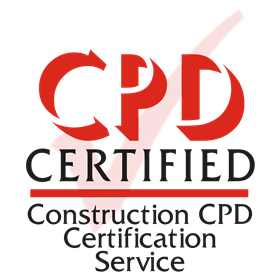
How to take this module
Assemble Media Group’s CPD distance-learning programme is open to anyone seeking to develop their knowledge and skills. Each module also offers members of professional institutions an opportunity to earn between 30 and 90 minutes of credits towards their annual CPD requirement.
This article is accredited by the CPD Certification Service. To earn CPD credits, read the article and then click the link below to complete your details and answer the questions. You will receive your results instantly, and if all the questions are correctly answered, you will be able to download your CPD certificate straight away.
CPD CREDITS: 60 MINUTES
DEADLINE: 3 JANUARY 2020
Privacy policy
Information you supply to Assemble Media Group Limited may be used for publication and also to provide you with information about our products or services in the form of direct marketing by email, telephone, fax or post. Information may also be made available to third parties. Assemble Media Group Limited may send updates about Building CPD and other relevant Assemble Media Group Limited products and services. By providing your email address you consent to being contact by email, telephone, fax or post by Assemble Media Group Limited or other third parties. If at any time you no longer wish to receive anything from Assemble Media Group Limited or to have your data made available to third parties, contact the Data Protection Coordinator at building@building.co.uk. View our full privacy policy here


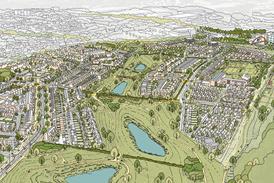
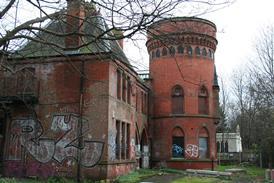













No comments yet